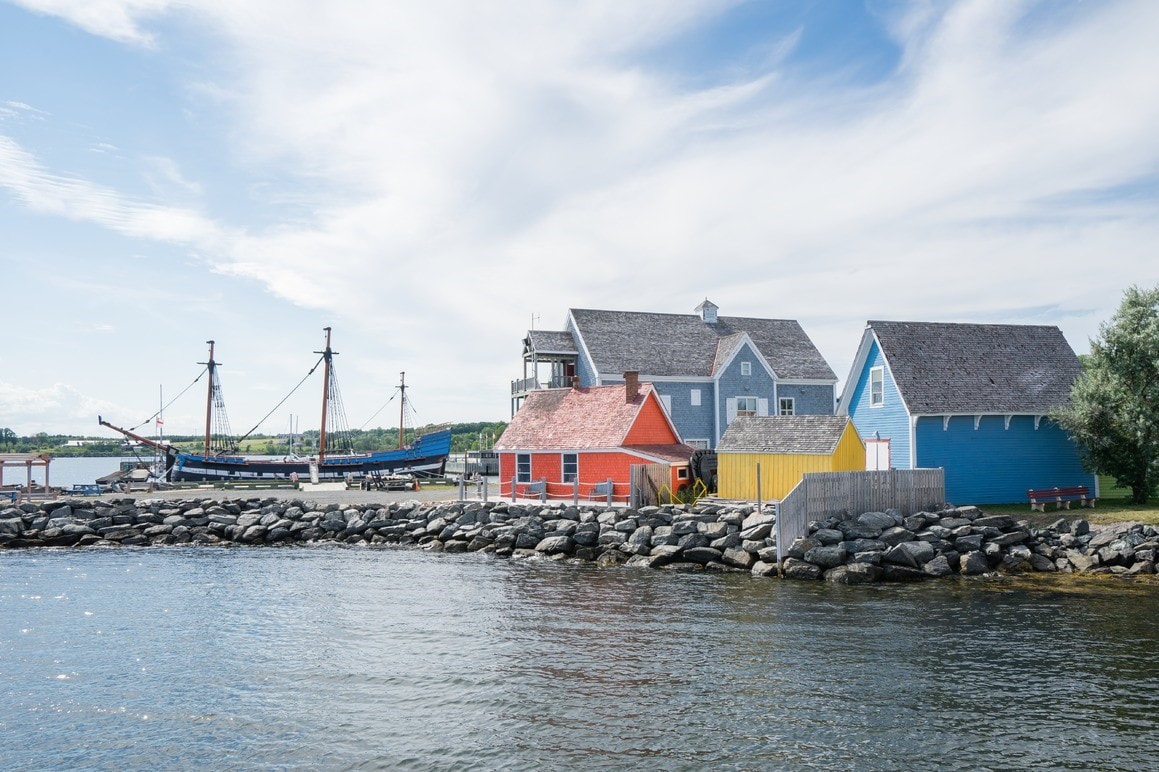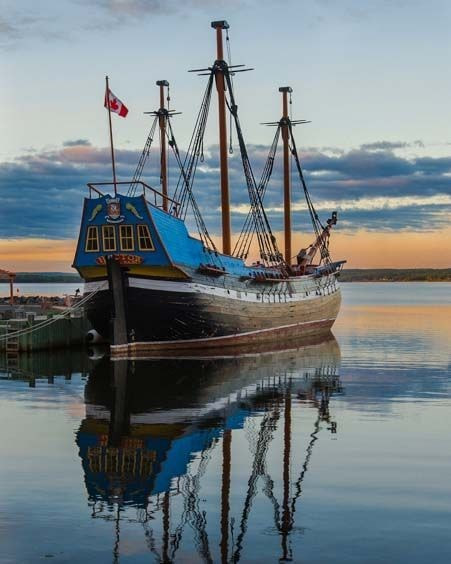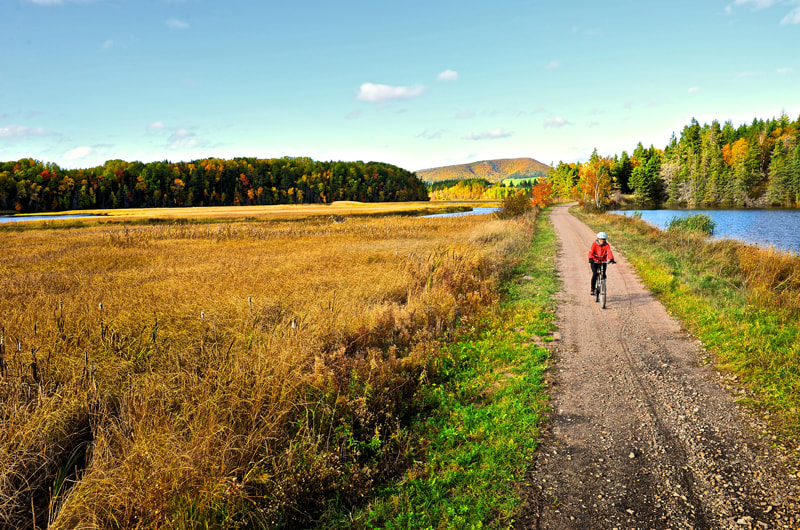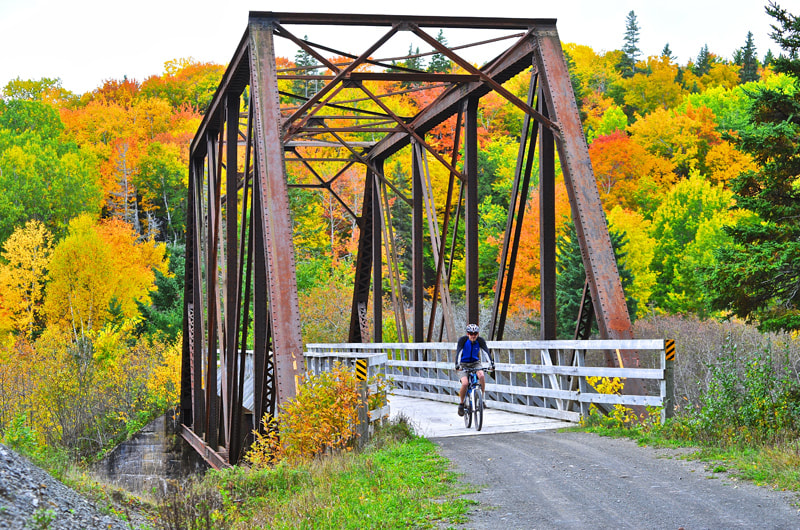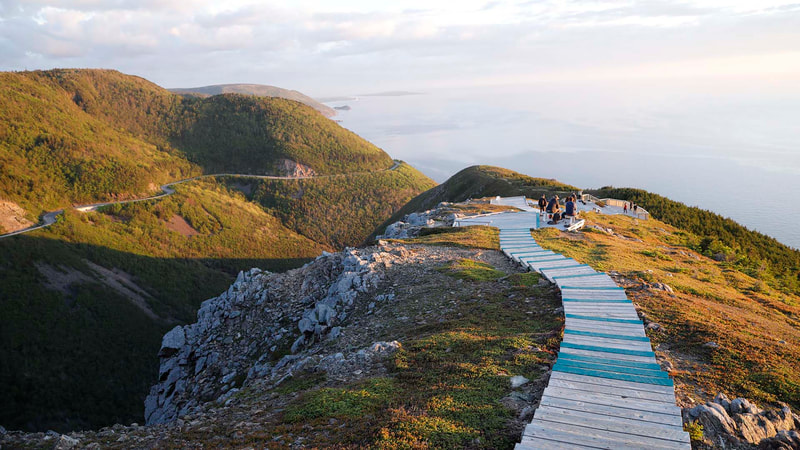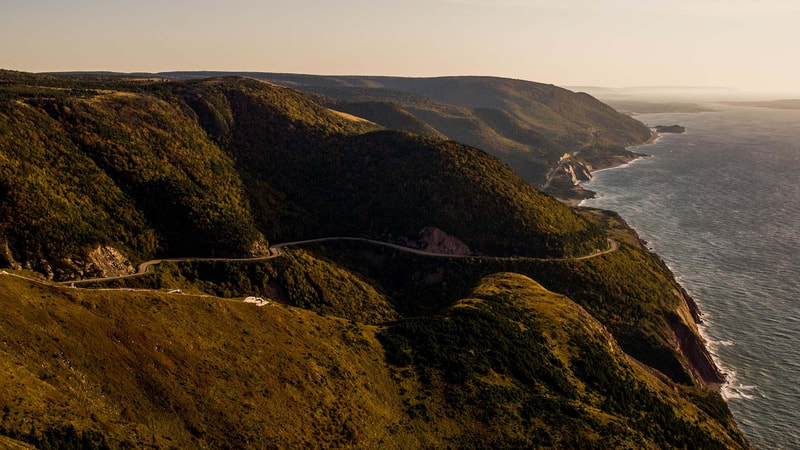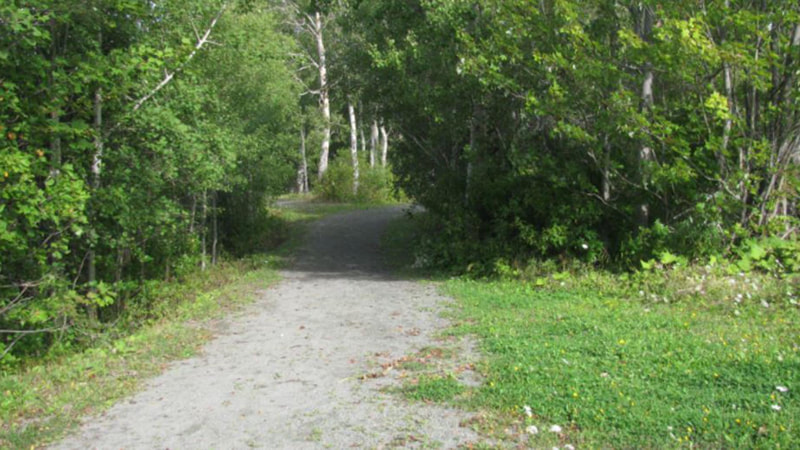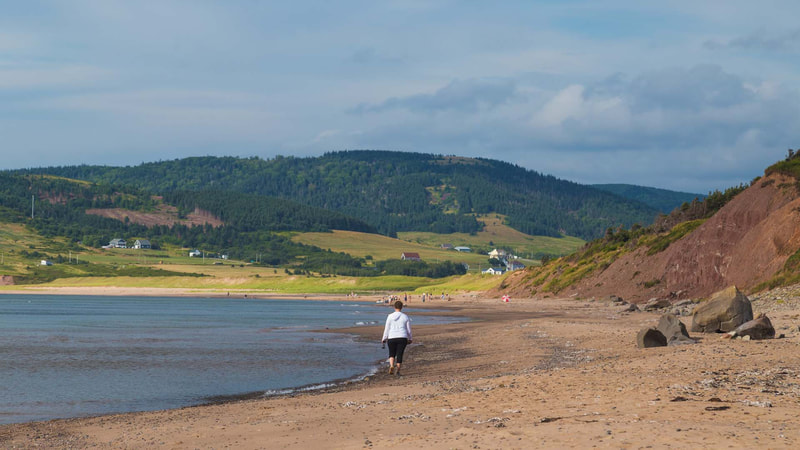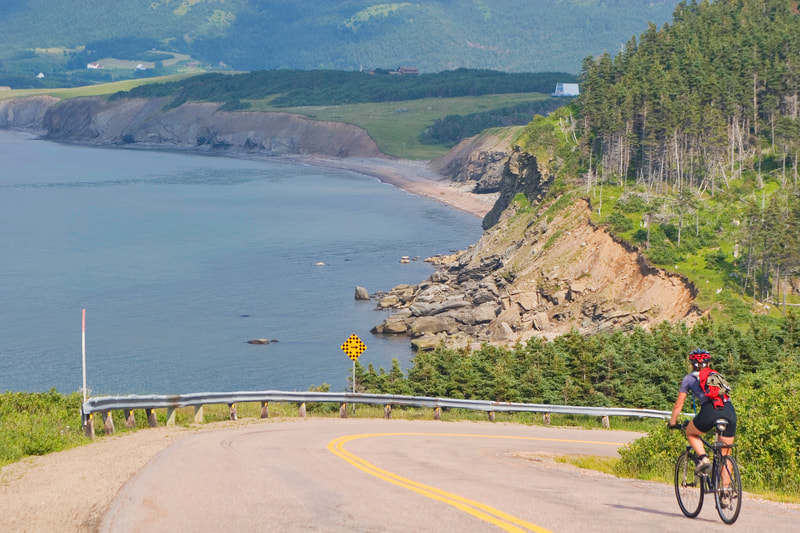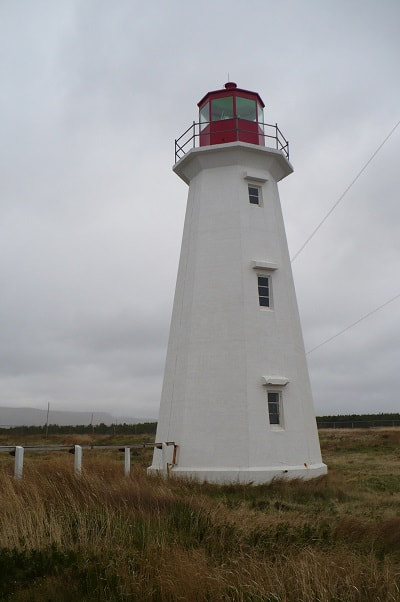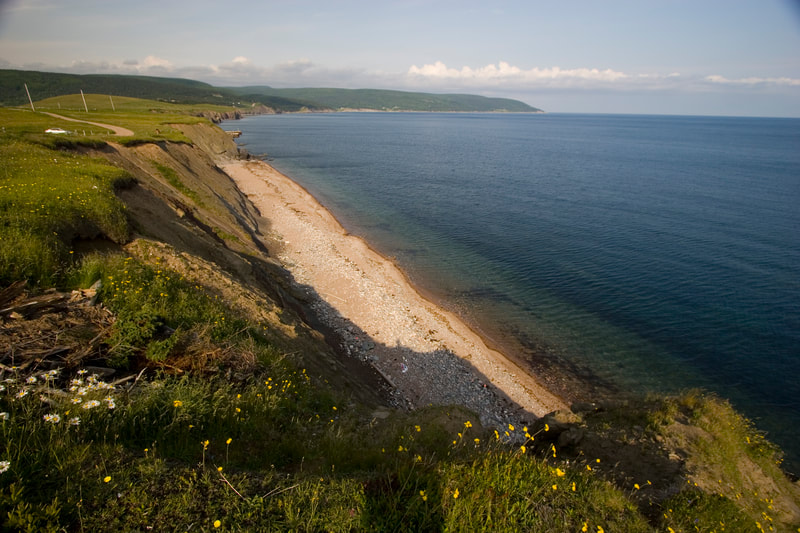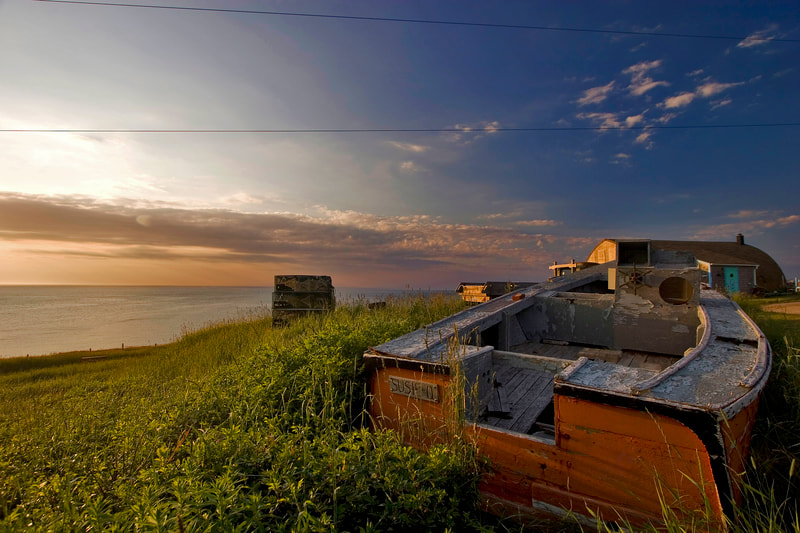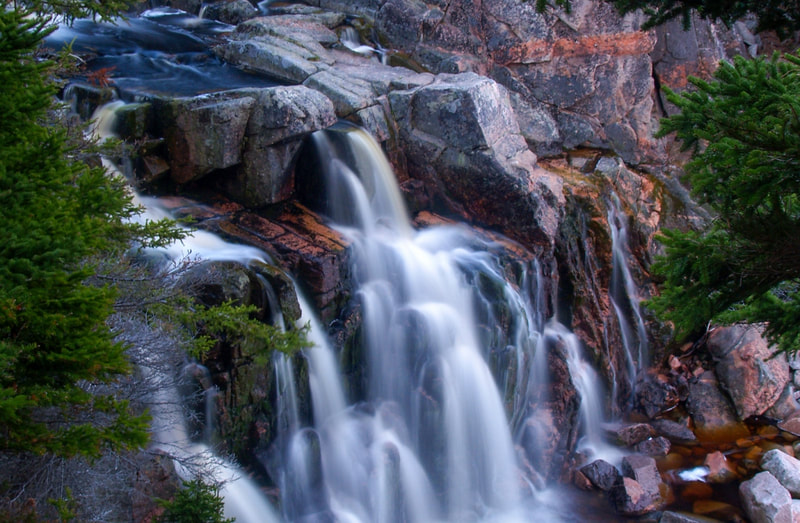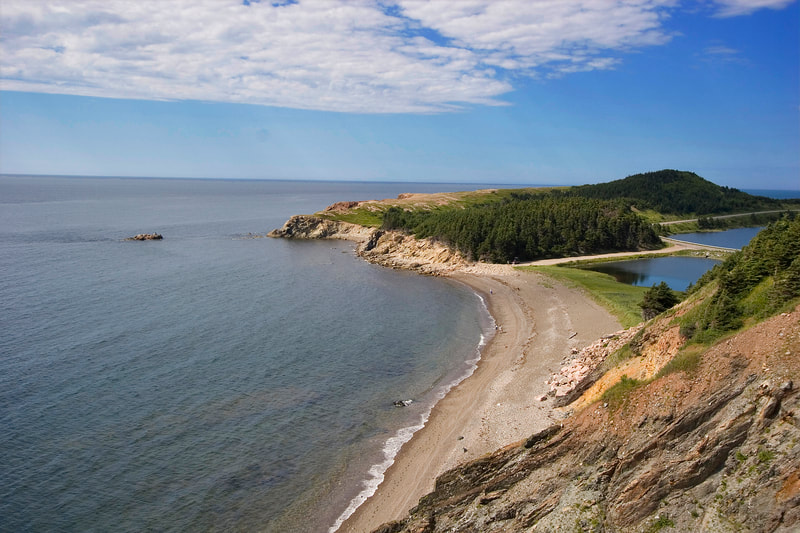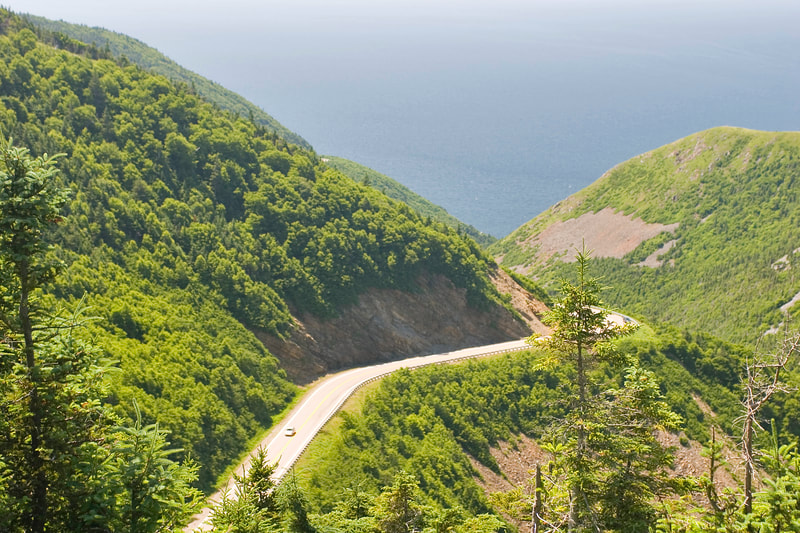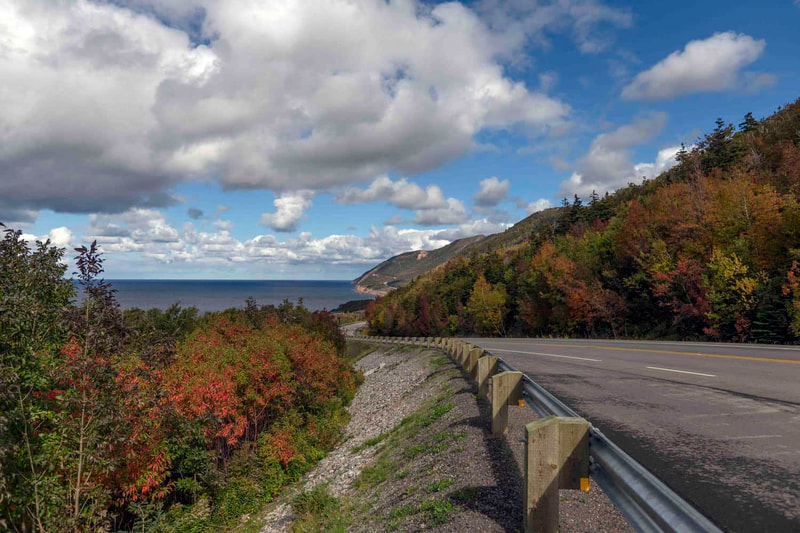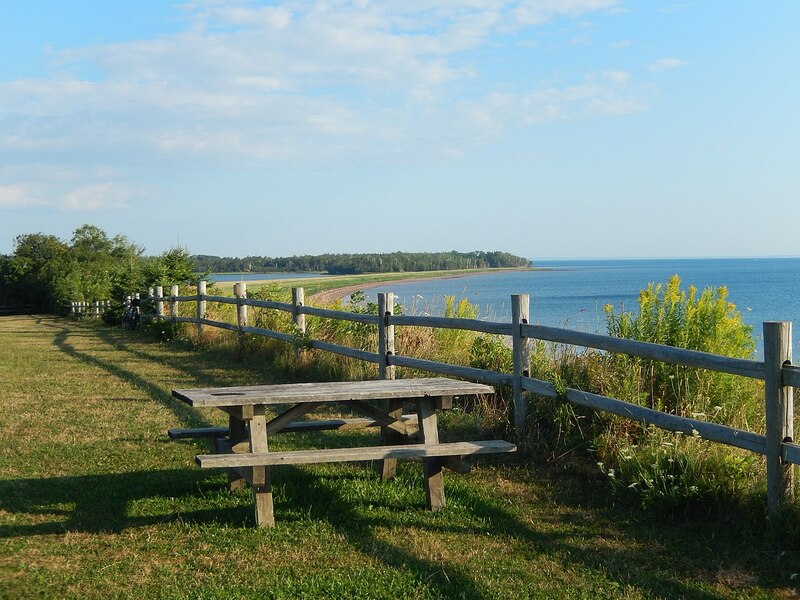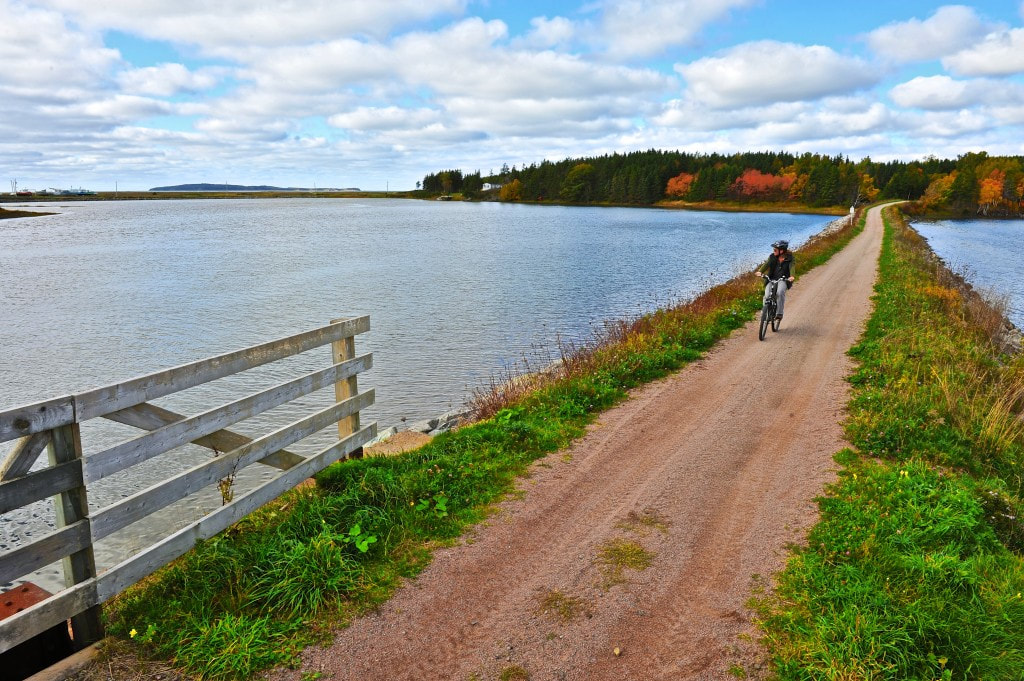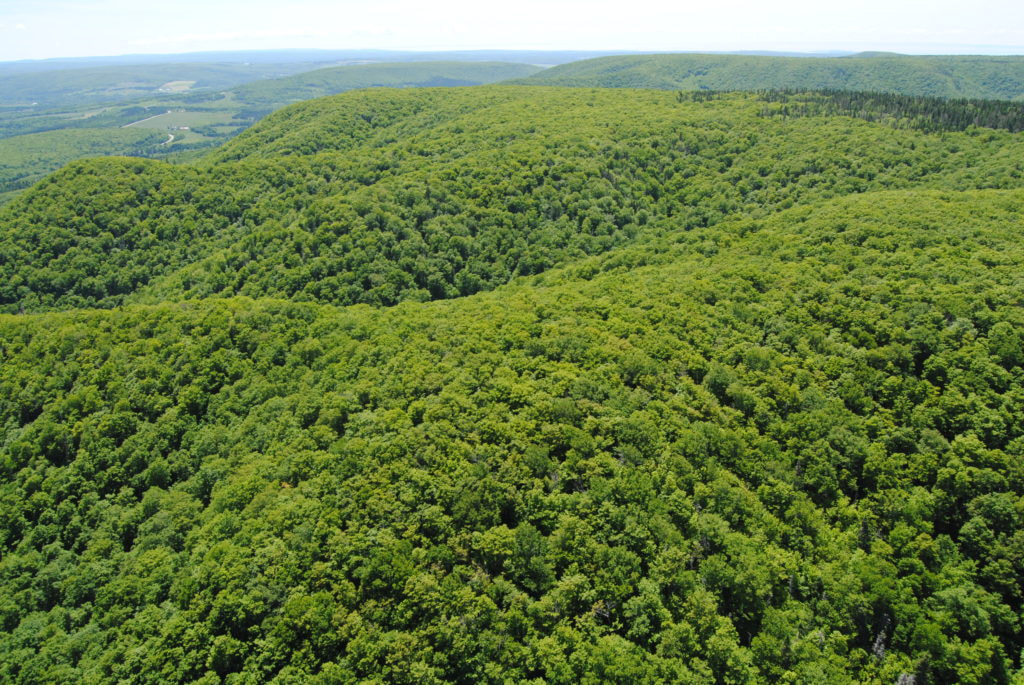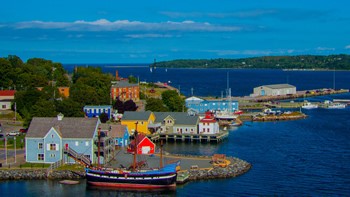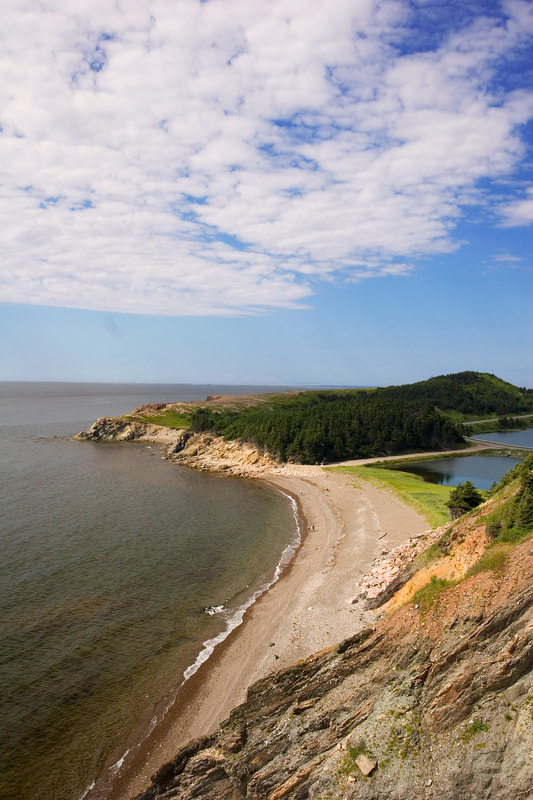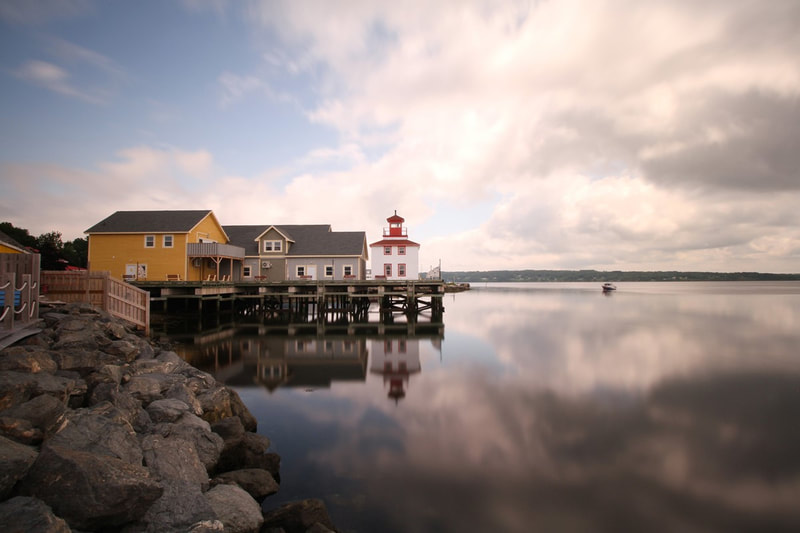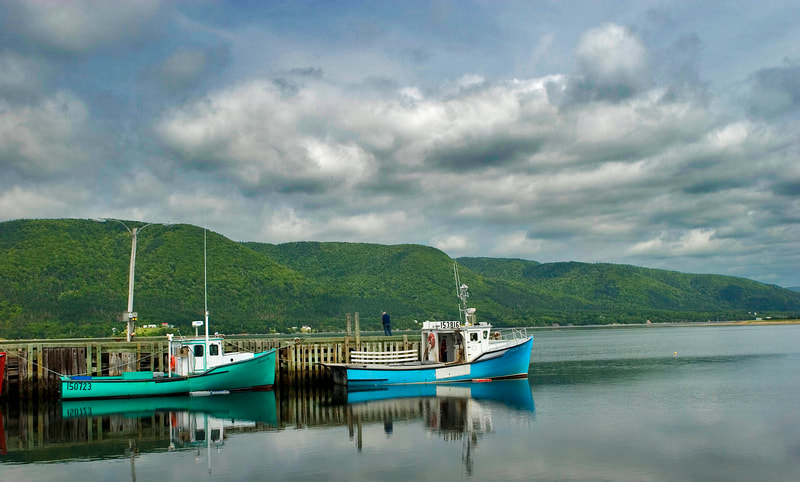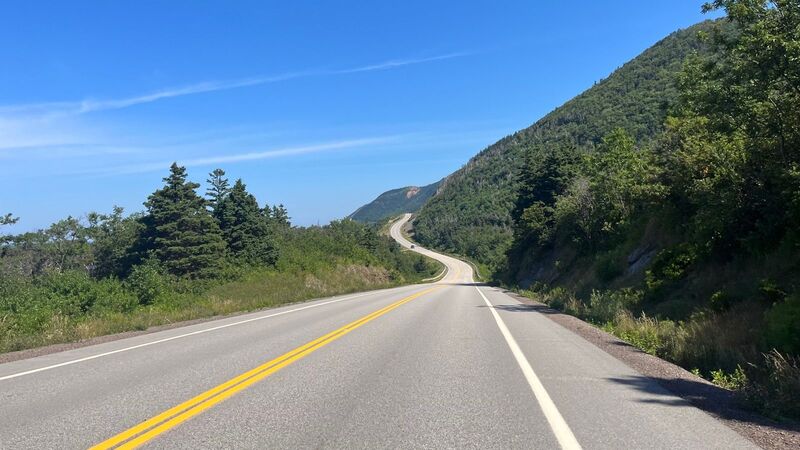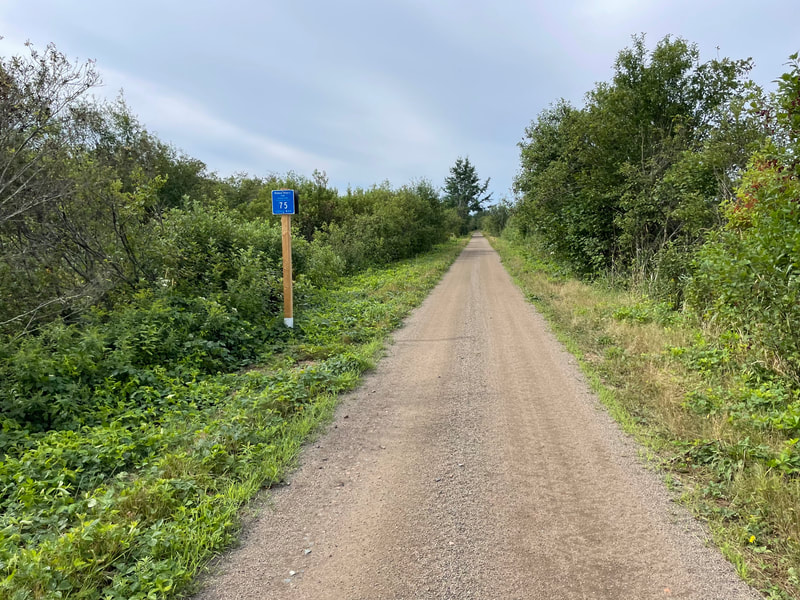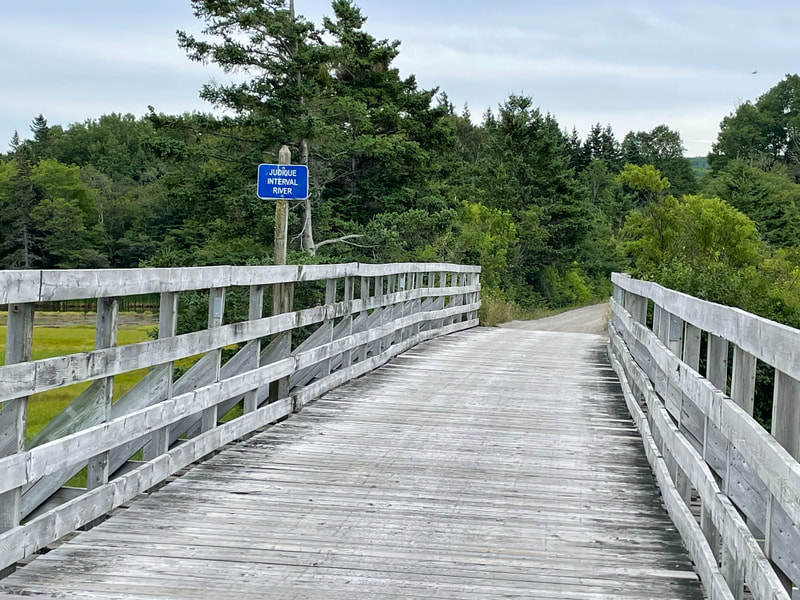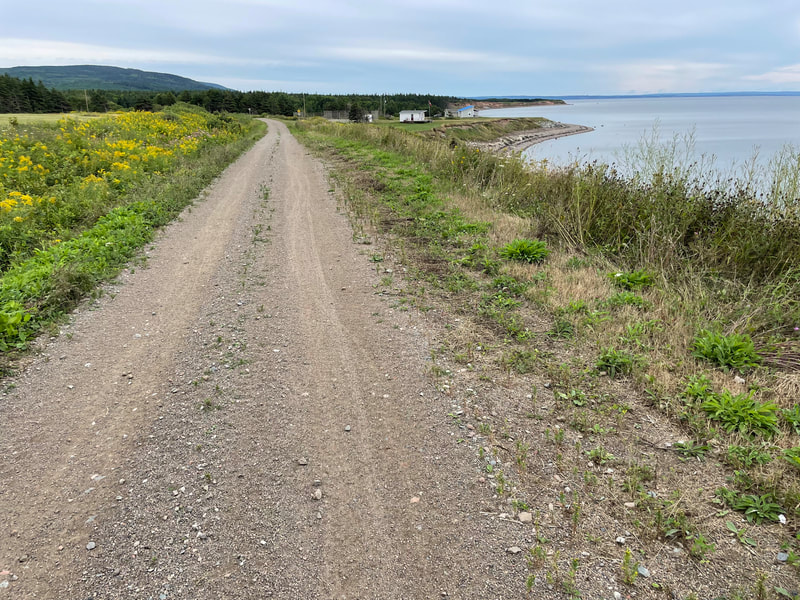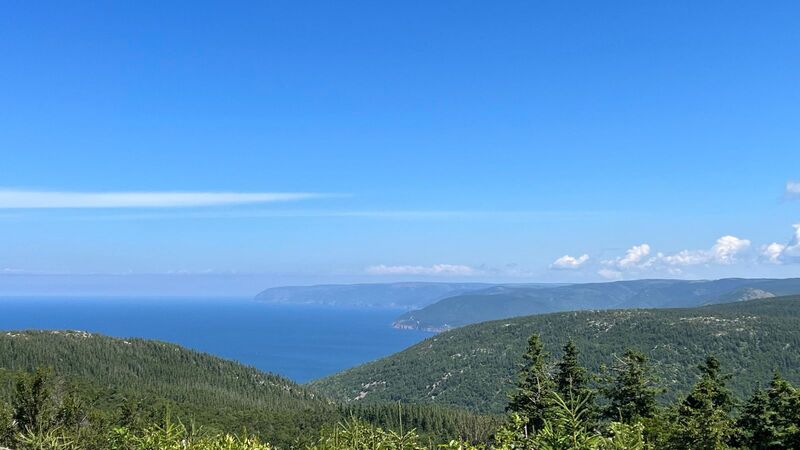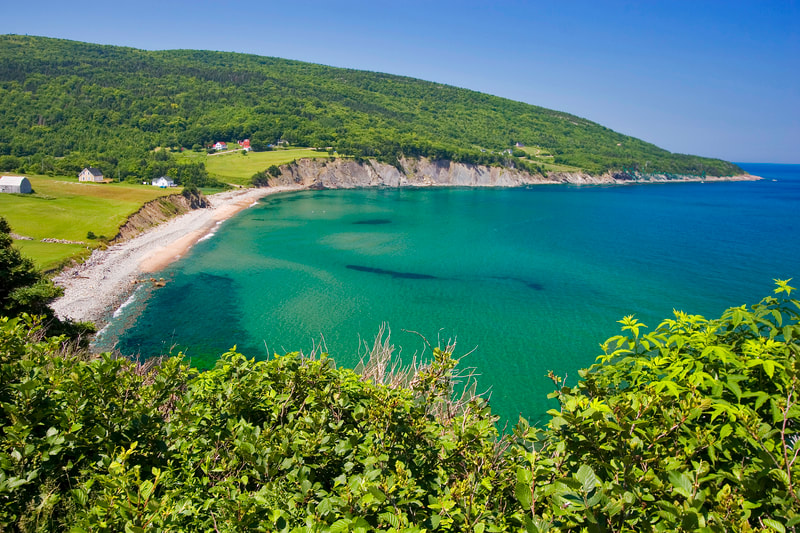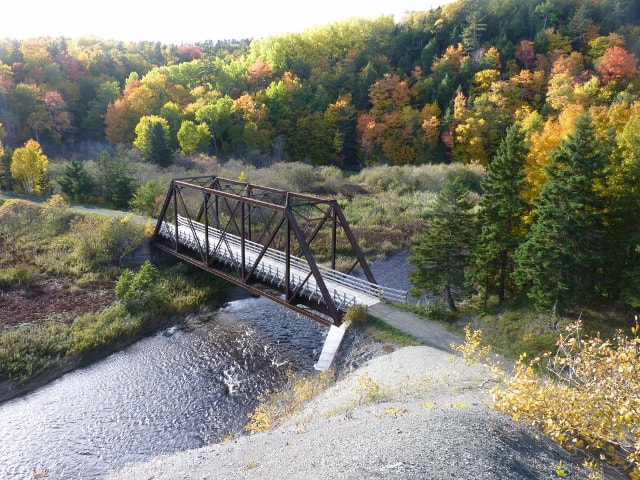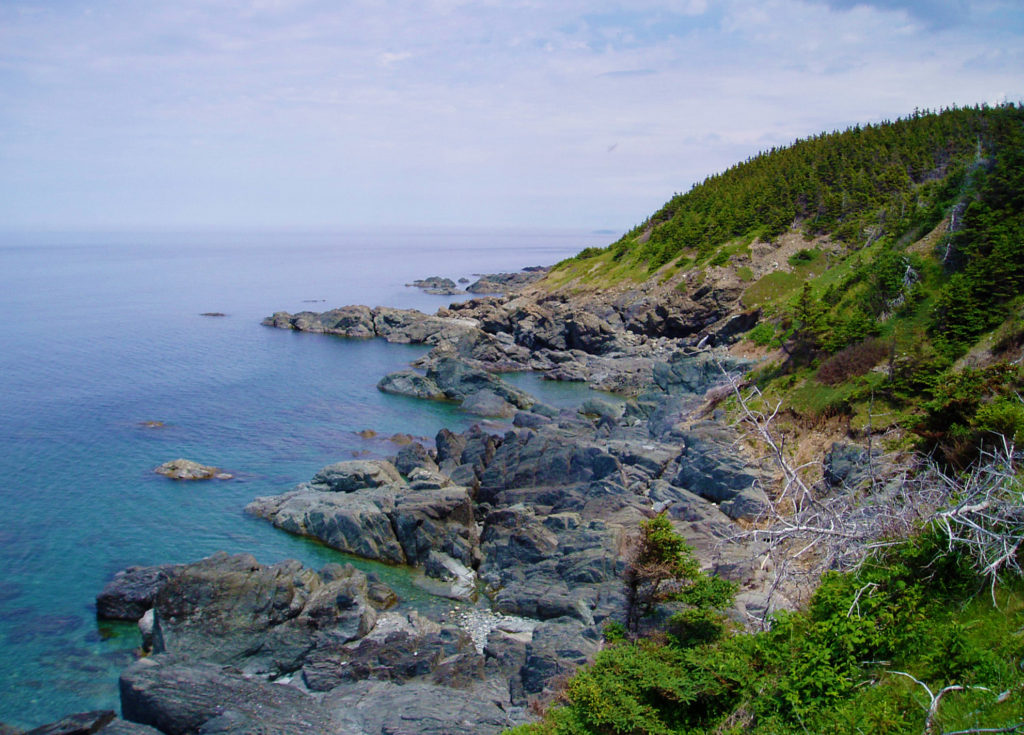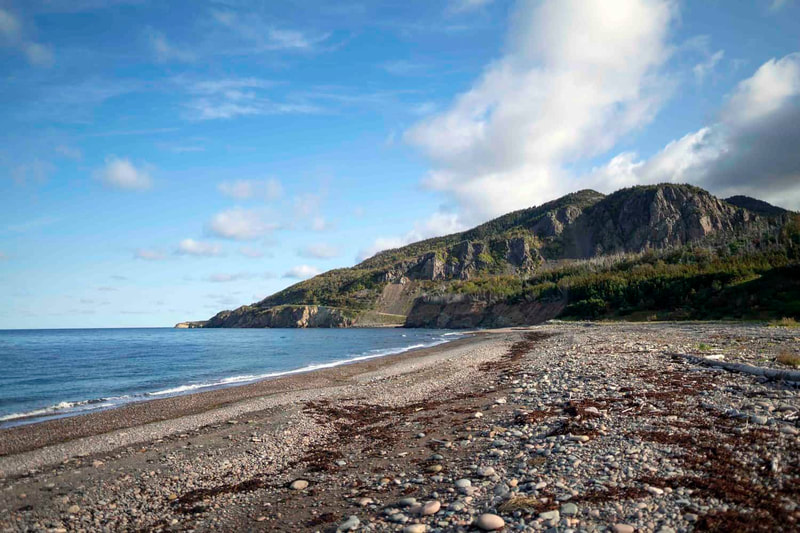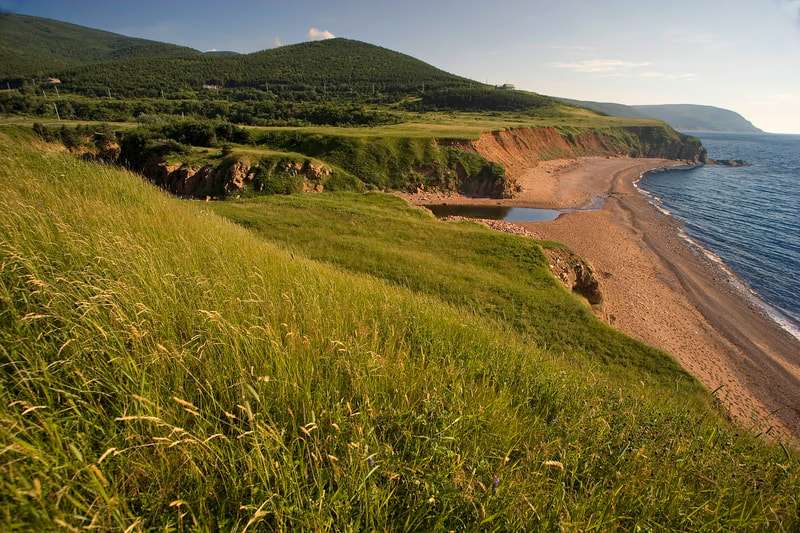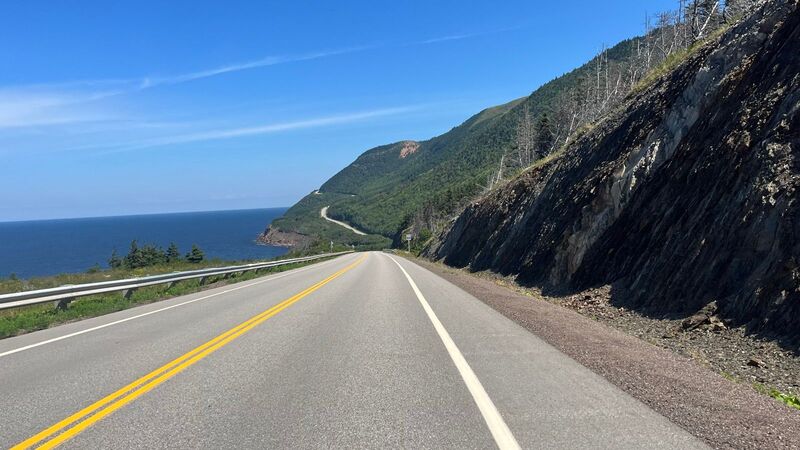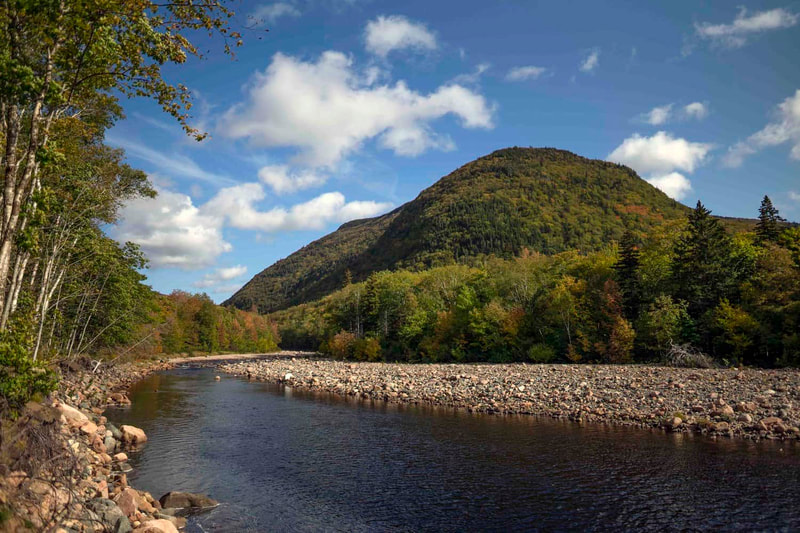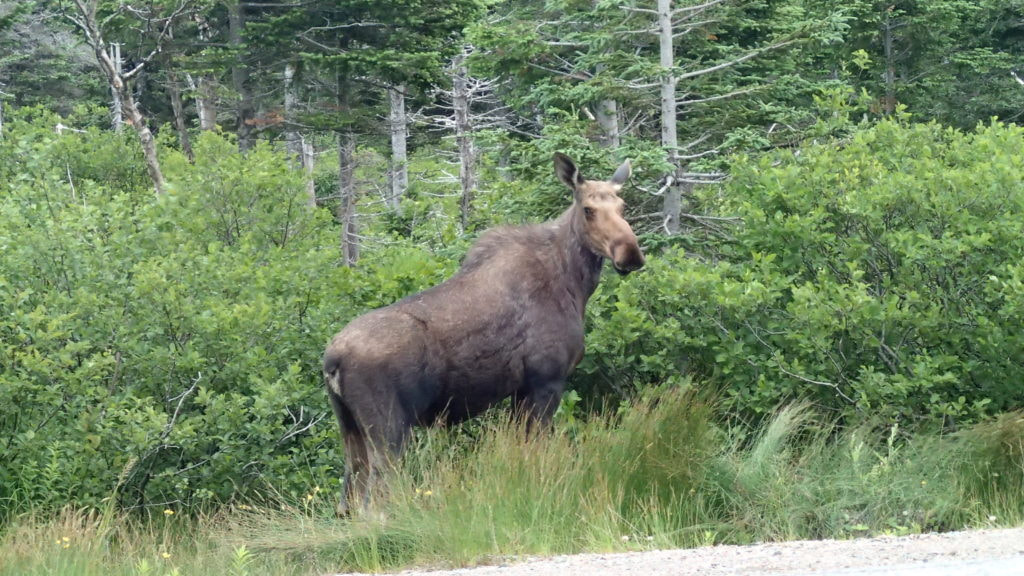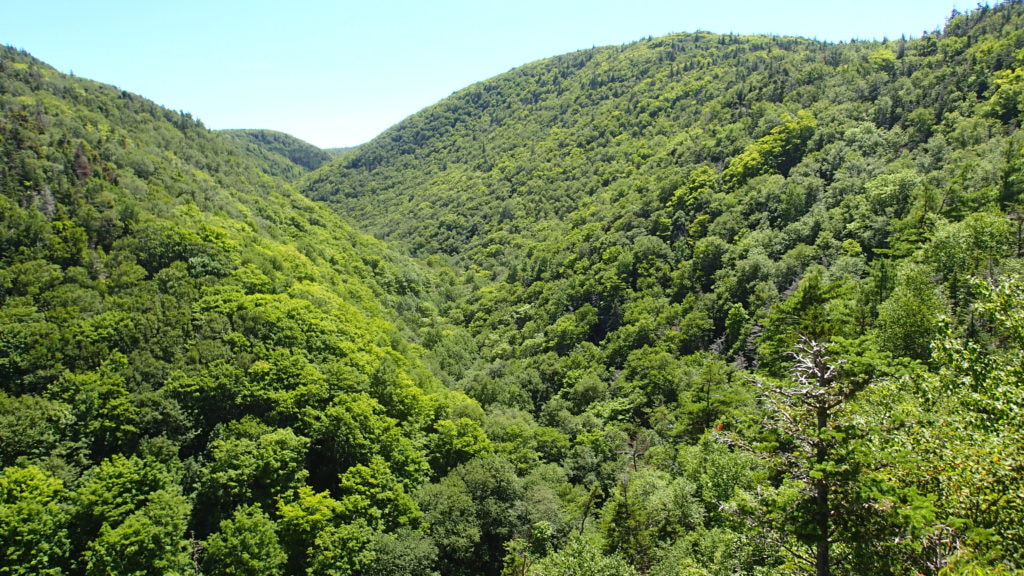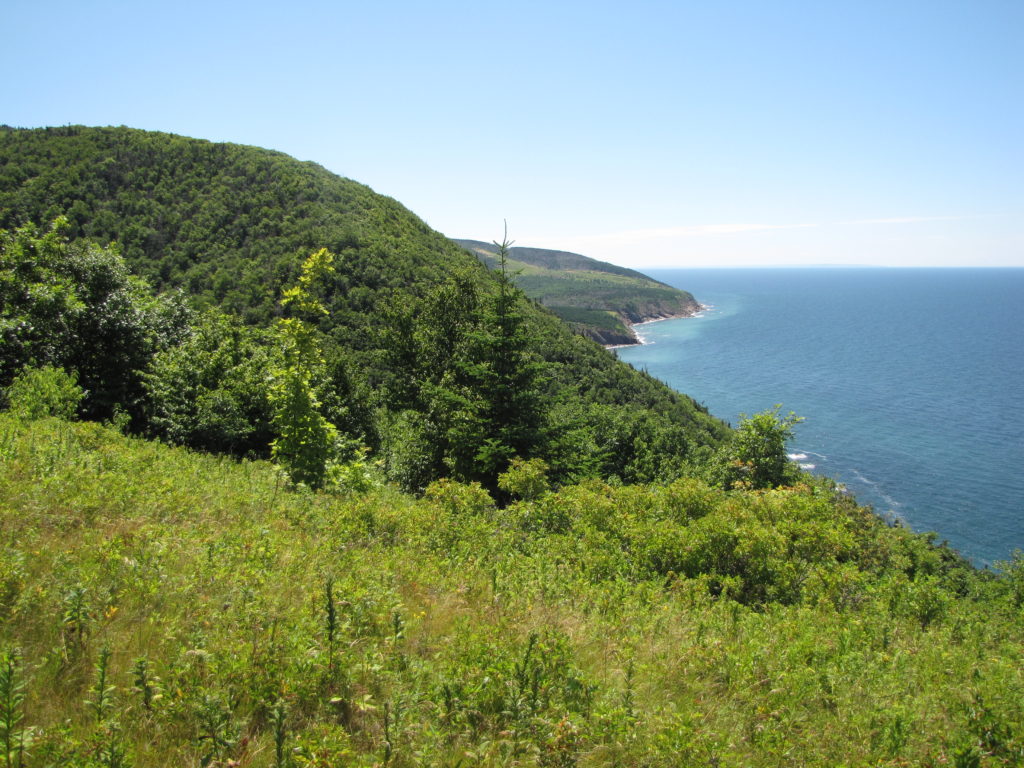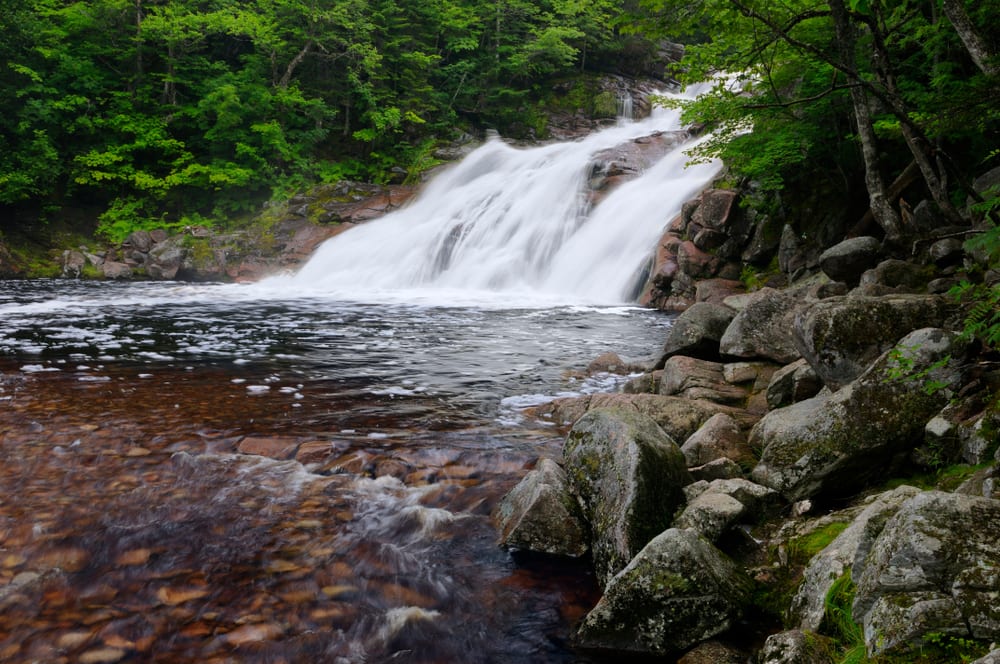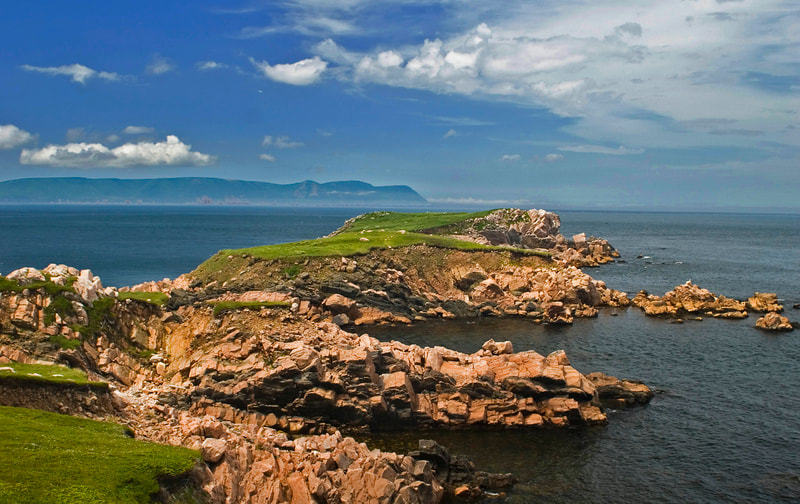Nova Scotia
Time to take a deep dive into the Canadian Maritimes and immerse yourself in the culture and stunning landscape. As to be expected with the GNBR, the Nova Scotia segment is made up of a medley of riding surfaces that meander across the countryside – everything from paved roads, dirt logging roads, chunky ATV paths, and rail trail are here to explore. All these take you to alluring seaside harbours, charming communities, swaths of boreal forest and magnificent coastline cliffs. And this is your chance to take in the world famous (and hilly) Cabot Trail.
Highlights include:
Rugged and dramatic cliff-lined coastal views are plenty on Cape Breton. So many picture-worthy scenes to be enjoyed.
A visit to several modest communities including Pictou, New Glasgow, and Badeck where you are sure to experience the famed maritime hospitality.
A sampling of the Easter Divide Trail
A chance to take in some of Canada’s most impressive coastal sunsets.
The province is the heart of a vibrant and popular style of Celtic music and dance derived from the influence of its Highland Scottish settlement. Those who have come for a taste of the Celtic heritage will not be disappointed.
Cape Breton offers plenty of opportunities for excellent nature hikes if you are looking for a little bit of non-bike activity.
If you have worked up an appetite for seafood, this is a place you won’t be disappointed. Who is hungry for a lobster sandwich?
The coastal riding on Cape Breton offers several opportunities to scratch an itch for beach camping.
The Tough Stuff
Paved and gravel road grades in the Maritimes can be steep in short, exhausting bursts. This is particularly the case on Cape Breton Island. Additionally, the rougher condition of some of the dirt roads and paths roads can beat up the body over the days.
During the summer tourist season areas of the Cabot Trail can be busy and, thus, more traffic on the roads. Accommodation can also be harder to book during the summer months.
Maritime weather can be fickle, to say the least. Warmer months also mean a greater risk for feisty Atlantic storms. Be sure to pack for wet weather riding. It’s important to be aware of weather forecasts when riding this route during hurricane season, which generally begins at the start of September.
Bike shops are not a fixture of this route. So it’s best to pack what you need for bike repair and maintenance.
So-called “wild camping” might be required along this route as there are stretches where commercial campgrounds and roofed accommodations are few and far between. It’s generally acceptable and tolerated to set up camp where you need to as long as you are not pitching a tent or bivvy on private land without permission.
Need to know
The best bike for this segment of the GNBR is an adventure-style bike, drop-bar or flat bar. This means a nice amount of rubber (2-inch or larger) and generous gearing. A beefier set-up will be more comfortable over the long haul.
On the route file, you’ll notice several options for route alternatives. This allows you to alter your ride as you would like.
This segment of the GNBR is generally rideable from May through October. Different times of season offer different pros and cons. For instance, after September temps can start to get on the chilly side. But this tends to be a drier time of year with the chance for fetching fall colours. Fewer bug issues, too.
Some of the off-pavement sections may be within active logging operations. Riders must always yield to logging traffic as they are not pulling aside for you.
The Cabot Trail entails several sections of paved riding with variable traffic. It’s advisable to ride with rear flashing bike lights for added safety.
Town parks, community centres, churches and even cemeteries can be safe public places to camp overnight if you use wise judgment and practice leave no trace.
Black bears are around in several areas, so it’s important to practice smart camping habits such as not keeping any food in your tent.
Cell service may be hit-and-miss in some areas. Bringing a satellite tracking device is not a bad idea.
For a shorter adventure in the area, it is possible to ride this GNBR micro-route on Cape Breton Island.
It’s worth noting that an alternative ending to GNBR for riders not moving on to Newfoundland is Indian Beach at North Sydney.
If you have any questions about the Nova Scotia segment of the route please contact us.
Highlights include:
Rugged and dramatic cliff-lined coastal views are plenty on Cape Breton. So many picture-worthy scenes to be enjoyed.
A visit to several modest communities including Pictou, New Glasgow, and Badeck where you are sure to experience the famed maritime hospitality.
A sampling of the Easter Divide Trail
A chance to take in some of Canada’s most impressive coastal sunsets.
The province is the heart of a vibrant and popular style of Celtic music and dance derived from the influence of its Highland Scottish settlement. Those who have come for a taste of the Celtic heritage will not be disappointed.
Cape Breton offers plenty of opportunities for excellent nature hikes if you are looking for a little bit of non-bike activity.
If you have worked up an appetite for seafood, this is a place you won’t be disappointed. Who is hungry for a lobster sandwich?
The coastal riding on Cape Breton offers several opportunities to scratch an itch for beach camping.
The Tough Stuff
Paved and gravel road grades in the Maritimes can be steep in short, exhausting bursts. This is particularly the case on Cape Breton Island. Additionally, the rougher condition of some of the dirt roads and paths roads can beat up the body over the days.
During the summer tourist season areas of the Cabot Trail can be busy and, thus, more traffic on the roads. Accommodation can also be harder to book during the summer months.
Maritime weather can be fickle, to say the least. Warmer months also mean a greater risk for feisty Atlantic storms. Be sure to pack for wet weather riding. It’s important to be aware of weather forecasts when riding this route during hurricane season, which generally begins at the start of September.
Bike shops are not a fixture of this route. So it’s best to pack what you need for bike repair and maintenance.
So-called “wild camping” might be required along this route as there are stretches where commercial campgrounds and roofed accommodations are few and far between. It’s generally acceptable and tolerated to set up camp where you need to as long as you are not pitching a tent or bivvy on private land without permission.
Need to know
The best bike for this segment of the GNBR is an adventure-style bike, drop-bar or flat bar. This means a nice amount of rubber (2-inch or larger) and generous gearing. A beefier set-up will be more comfortable over the long haul.
On the route file, you’ll notice several options for route alternatives. This allows you to alter your ride as you would like.
This segment of the GNBR is generally rideable from May through October. Different times of season offer different pros and cons. For instance, after September temps can start to get on the chilly side. But this tends to be a drier time of year with the chance for fetching fall colours. Fewer bug issues, too.
Some of the off-pavement sections may be within active logging operations. Riders must always yield to logging traffic as they are not pulling aside for you.
The Cabot Trail entails several sections of paved riding with variable traffic. It’s advisable to ride with rear flashing bike lights for added safety.
Town parks, community centres, churches and even cemeteries can be safe public places to camp overnight if you use wise judgment and practice leave no trace.
Black bears are around in several areas, so it’s important to practice smart camping habits such as not keeping any food in your tent.
Cell service may be hit-and-miss in some areas. Bringing a satellite tracking device is not a bad idea.
For a shorter adventure in the area, it is possible to ride this GNBR micro-route on Cape Breton Island.
It’s worth noting that an alternative ending to GNBR for riders not moving on to Newfoundland is Indian Beach at North Sydney.
If you have any questions about the Nova Scotia segment of the route please contact us.
